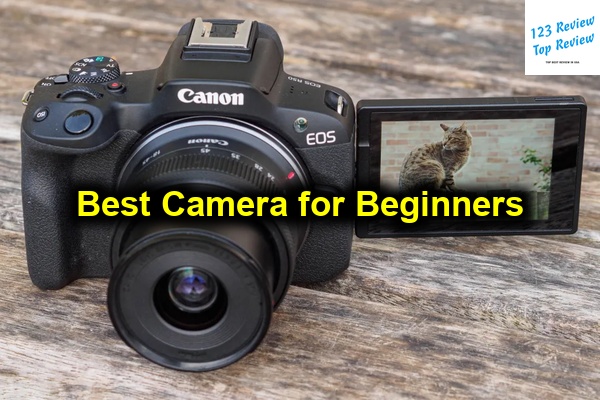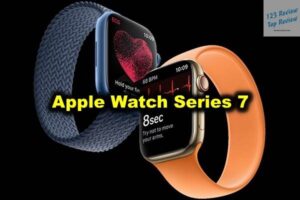Venturing into the world of photography can be both exciting and overwhelming. Whether your goal is to capture stunning landscapes, candid moments, or start a vlog, having the right camera can significantly influence your photographic journey.

This guide aims to demystify the camera selection process, focusing on the best options for beginners in 2024 and providing insights into essential features, types, and accessories.
Factors to Consider When Choosing a Beginner Camera
Selecting the right camera involves a balance of technical specifications, usability, and personal preference. It’s crucial to understand various factors that cater to the unique needs of beginners.
Camera Types: DSLR vs. Mirrorless
The first pivotal decision when choosing a camera is between a DSLR and a mirrorless system. Both have advantages and drawbacks, suited to different preferences and shooting styles.
DSLR Cameras: Digital Single-Lens Reflex (DSLR) cameras have been a staple in photography for decades. They use mirrors to reflect light into an optical viewfinder. This provides a true-to-life image, uninfluenced by sensors or screens, which many traditionalists prefer. Additionally, DSLRs often offer longer battery life owing to less reliance on electronic screens, making them ideal for extended shooting sessions. Their robust build and ergonomics can provide a more stable grip, valuable for those prioritizing durability.
Mirrorless Cameras: In contrast, mirrorless cameras have risen in popularity due to their compact and lightweight nature, a direct result of their lack of a mirror system. This feature not only makes them more portable but also more discreet — advantageous for street and travel photography. The elimination of the mirror mechanism allows for quieter operations, a subtler approach when capturing scenes without disruption. The electronic viewfinders (EVFs) offer a digital preview with exposure and color effects applied, providing a true what-you-see-is-what-you-get shooting experience. Furthermore, advancements in technology have led to features such as in-body stabilization and enhanced video capabilities, propelling mirrorless cameras to the forefront for innovative shooting techniques.
For beginners, the decision often hinges on what feels comfortable and intuitive. Trying both types, either through rentals or at a camera store, can provide a tactile understanding of each system.
Understanding Sensor Sizes: APS-C vs. Micro Four Thirds
The sensor is the heart of your camera, converting light into digital images. Understanding sensor size is crucial as it affects image quality, depth of field, and low-light performance.
APS-C Sensors: These are larger compared to Micro Four Thirds and are commonly found in both entry-level DSLRs and mirrorless cameras. The larger sensor size means better light collection, translating to better image quality, especially in low-light conditions. It allows for a shallower depth of field too, providing the satisfying bokeh effect that is often sought after in portraits. For instance, Canon EOS 90D and Nikon D5600 are examples where APS-C sensors offer substantial image quality enhancements.
Micro Four Thirds (MFT) Sensors: MFT sensors are smaller, leading to a more compact camera body overall, which is beneficial for travel and everyday photography. While they may not excel in low-light scenarios to the same degree as APS-C sensors, they offer satisfactory performance for most everyday lighting conditions. Cameras like the Olympus OM-D E-M10 Mark IV highlight the best of MFT with portability and versatility, often favored by those who prioritize size and weight as significant factors in their photography toolkit.
Importance of Autofocus Systems for Beginners
Autofocus (AF) is critical for those starting out, as it simplifies capturing clear, sharp images without manual adjustments that can be challenging for beginners.
Modern cameras boast advanced autofocus systems characterized by speed, accuracy, and flexibility. Phase Detection AF is prevalent in DSLRs and some mirrorless cameras, offering quick and reliable focusing, especially effective in daylight conditions. On the other hand, Contrast Detection AF is more common in compact cameras and entry-level mirrorless systems, providing precise focusing though sometimes slower in low-light conditions.
For a beginner, look for cameras that offer substantial AF points spread across the frame. High-performing beginner cameras like Sony’s a6400 come equipped with real-time Eye AF and Animal Eye AF systems, which track subjects’ eyes for sharp portraits or even pets, making it easier to focus on moving subjects, such as children or wildlife in their natural settings.
Top Beginner Cameras of 2024
Exploring the top beginner cameras in 2024 requires considering personal needs and exploring cameras that cater to specific aspects of photography and videography.
Best Overall Beginner Camera
The Canon EOS R50 emerges as the quintessential choice for beginners eager to dive into photography and videography with ease. Housing a 24.2 MP APS-C sensor, it ensures exceptional photo quality across varied lighting conditions. The dual pixel autofocus system supports swift and accurate subject tracking, crucial for sports and wildlife photography. Additionally, its fully articulated touchscreen simplifies shooting from unconventional angles or during selfies and vlogging endeavors.
Best Budget-Friendly Beginner Camera
Price-sensitive beginners can look towards the Nikon D3500. This entry-level DSLR is lauded for its affordability without sacrificing essential features. Sporting a 24.2 MP sensor, it delivers impressive image quality. Its Guide Mode is notably beneficial, transforming the camera into a learning tool by displaying step-by-step instructions directly on the screen. This function assists beginners in understanding basic photography principles and effective camera usage beyond automatic modes.
Best DSLR for New Photographers
For those drawn to the tactile and performance benefits of DSLRs, the Nikon D5600 provides an ideal blend of features and usability. Noteworthy is its 39-point autofocus system, enhancing its capability to track moving subjects accurately. The articulated touch screen augments user control over composition and settings — beneficial for shooting at challenging angles. Connectivity features like SnapBridge allow seamless transfer of images to smart devices, vital for instant sharing and backup.
Best Mirrorless Camera for Beginners
The Sony Alpha a6400 sets a high bar in the mirrorless segment, highlighting Sony’s commitment to beginner photographers keen on embracing a versatile system. Its standout feature is the fast hybrid AF system, recognized for its responsiveness and precision, making it particularly useful when focusing on fast-moving subjects or capturing decisive moments. Additionally, it offers robust build quality with weather-sealed construction, enhancing its suitability for outdoor photography.
Best Compact Camera for Beginners
Compact cameras cater to beginners seeking simplicity and portability. The Fujifilm X100V is particularly noteworthy, boasting a fixed 23mm f/2 lens which offers sharpness and clarity, perfect for street and travel photography. Its advanced hybrid viewfinder provides an intriguing blend of optical clarity and digital displays, appealing to photographers seeking the best of both worlds. The camera’s classic aesthetic combined with advanced tech features makes it a desirable choice for those prioritizing compact elegance.
Video Capabilities in Beginner Cameras
As video creation becomes more integrated into the storytelling process, understanding video features is essential for beginners keen on exploring videography or creating multimedia content.
Importance of 4K Video in Entry-Level Cameras
Today, 4K video is not just a professional need but also a significant capability in entry-level cameras. 4K resolution offers a more detailed and richer quality video, allowing more flexibility in editing, such as cropping without losing video quality. Cameras such as the Canon EOS R50 feature 4K at 30fps or even 60fps in some models, delivering smoother, high-quality motion perfect for everyday vlogging, streaming, or cinematic projects.
Vlogging Cameras for Beginners
For aspiring vloggers, the Sony ZV-1 remains an exemplary choice due to its built-in vlogging features. It has a directional microphone for clearer audio capture and a background defocus button, allowing for instant bokeh effects. Its real-time Eye AF and product showcase features are tailored to content creators, enabling effortless transitions and focus on highlighted objects during recording sessions.
Essential Features for Beginner Cameras
Within any camera, several essential functionalities support enhanced ease of use and creativity for beginners.
User-Friendly Controls and Menus
User-friendly controls and intuitive menus are imperative when transitioning from smartphone cameras or point-and-shoot devices. Cameras like the Nikon D3500 offer assistive modes that guide beginners through different scenarios and settings, making it easier to understand the fundamentals of exposure, ISO, and shutter speeds. Additionally, touchscreen interfaces, as seen in the Canon M50 II, offer seamless navigation and interaction, reducing the learning curve significantly.
Lightweight and Portable Designs
Ensuring your camera doesn’t become a burden is crucial for regular use, particularly for shoots on-the-go. Lightweight models such as the Olympus PEN E-PL10 exemplify compact design without compromising quality. These cameras can be carried easily on hiking trips, daily commuting, or during events, encouraging beginners to shoot more frequently and develop their skills by practicing in diverse environments.
Lens Options for Beginner Cameras
A camera’s lens significantly dictates the creative possibilities available to the photographer. Understanding your lens options is key to maximizing your gear’s potential.
Selecting Lenses for DSLR vs. Mirrorless
Lens ecosystems vary notably between DSLR and mirrorless systems. While DSLRs offer a mature market with vast third-party support, mirrorless systems are quickly catching up with innovative lens technologies. Beginner photographers are often advised to start with versatile zoom lenses which span frequently used focal lengths. For DSLRs, a classic 18-55mm kit lens provides flexibility and broad user capabilities, whereas for mirrorless systems, the 16-50mm is comparably versatile and begins many lens kits for good reason.
Best Lens Options for Vlogging and Photography
Prime lenses, such as a 50mm f/1.8, are highly recommended for their superior low-light capabilities and beautiful out-of-focus backgrounds, enhancing both photography and video work. These lenses are affordable yet offer significant improvements over kit lenses. For vlogging, wide-angle lenses, such as a 16mm or 18mm with image stabilization, can cater to immersive captures by making frame compositions wider and smoother, crucial for enhancing viewer engagement and interest.
Choosing the Right Accessories for Beginners
Complementing your camera with the right accessories enhances the ability to capture high-quality images or videos and extends the functionality of your photography kit.
Essential Camera Accessories for Newbies
Every camera bag should contain essential accessories such as a cleaning kit, spare batteries, and memory cards. These foundations ensure that you can shoot for extended periods without interruptions and maintain your camera’s operational reliability. Protective camera bags also protect your gear from environmental and impact damage, securing your investment at all times.
Tripods and Stabilizers for Better Shots
Stability is fundamental for low-light situations or to ensure clear, sharp images. Tripods are invaluable, especially for landscape or night photography, while lightweight stabilizers or gimbals enhance video quality by reducing shake. Entry-level models, such as Joby’s GorillaPod or Manfrotto’s compact tripods, are both affordable and versatile, allowing for a diverse range of shooting situations.
Tips for Beginners to Improve Photography Skills
Acquiring a camera is just the start; consistent practice and learning are vital for skill enhancement and confidence in photography.
Learning Basic Photography Techniques
The journey begins with mastering basic techniques like understanding the exposure triangle (aperture, shutter speed, and ISO), composition rules such as the rule of thirds, and the impact of lighting. Leveraging online resources, courses, or books tailored to beginners can fast-track your understanding. Practical experience is essential in applying these concepts effectively.
Importance of Practice and Experimentation
Regular practice and the willingness to experiment with various styles and settings refine your skills exponentially. Consider joining online communities like Flickr or local camera clubs to gain feedback, insights, and inspiration from peers at similar skill levels. Challenge yourself with photo projects or themed shoots to push creative boundaries and gradually build a comprehensive portfolio reflective of your growth and interests.
By carefully selecting a camera that matches your aspirations and routinely practicing, you will find joy and development in every shutter click, gradually transforming photography from a budding hobby into a profound passion with endless possibilities.





